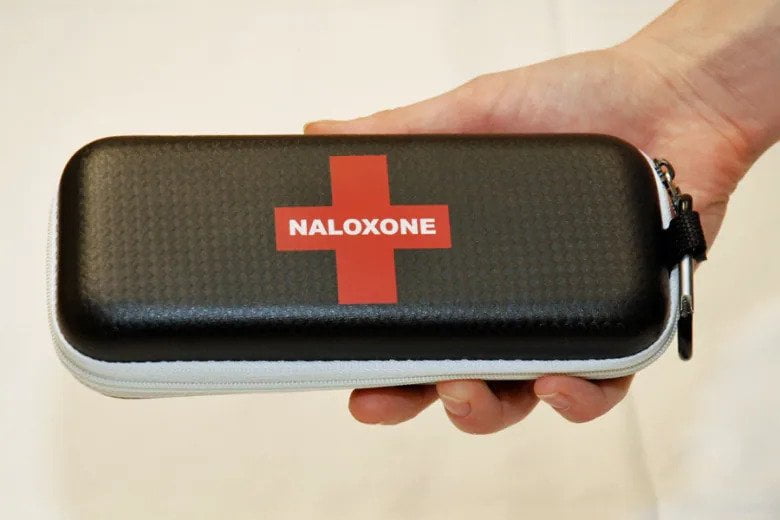Opioids, like OxyContin or heroin, bind to specific receptors in the brain, spinal cord, and gastrointestinal tract. That process minimizes the body’s perception of pain and causes feelings of euphoria—but it also affects other systems, like those responsible for regulating mood, blood pressure, and breathing. During an overdose, the opioid depresses the respiratory system so much that breathing stops altogether, which can make an overdose fatal. Naloxone has been around since the 1970s and has been used as a mainstay treatment of opioid overdose.
With the increased number of deaths from opioids, there was an urgent need to expand access to the antidote. In the hospital, naloxone is typically given by an intramuscular shot or IV line. The medication is also conveniently absorbed into the blood supply if administered in the nose. Emergency medical technicians began using nasal naloxone by rigging the IV formulation with an adapter that atomizes the medicine and allows it to be sprayed in the nose. Eventually, protocols to use naloxone spread to other first responders like police officers and firefighters, who are frequently the first to reach an overdose victim. The final step was to empower bystanders and family and friends of opioid users to carry and use naloxone.
If you or someone you know uses opioids, be sure to visit Ontario’s free Naloxone kit finder. It’s intended to directly connect people who use drugs with free naloxone and other harm reduction supplies. Or you can direct them to the nearest pharmacy. Not all pharmacies offer Naloxone kits. If you happen to live or work in Downtown Toronto, stop by SanoMed Pharmacy and grab a naloxone kit. It might save someone’s life very soon.

